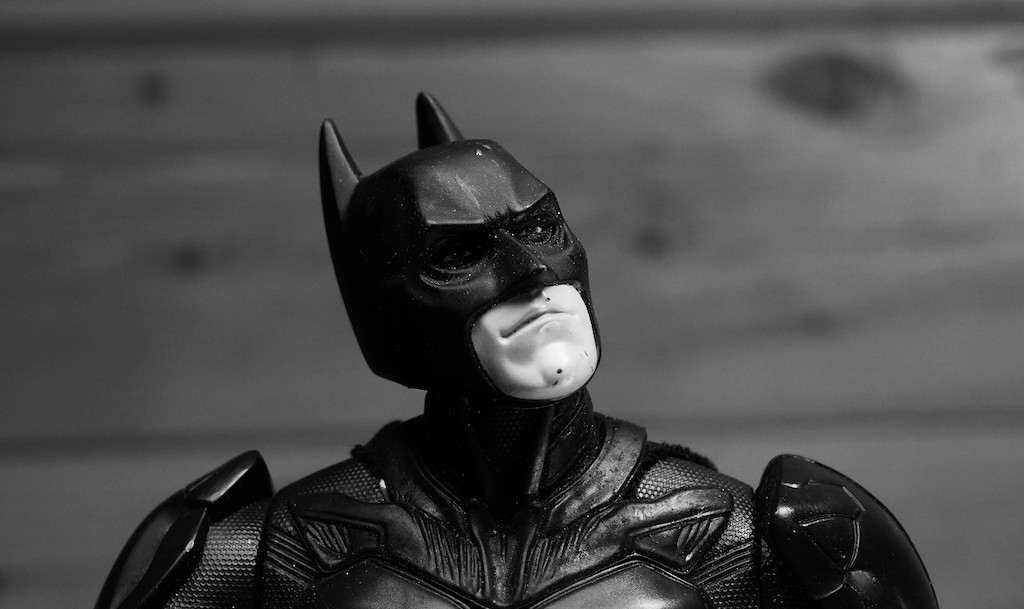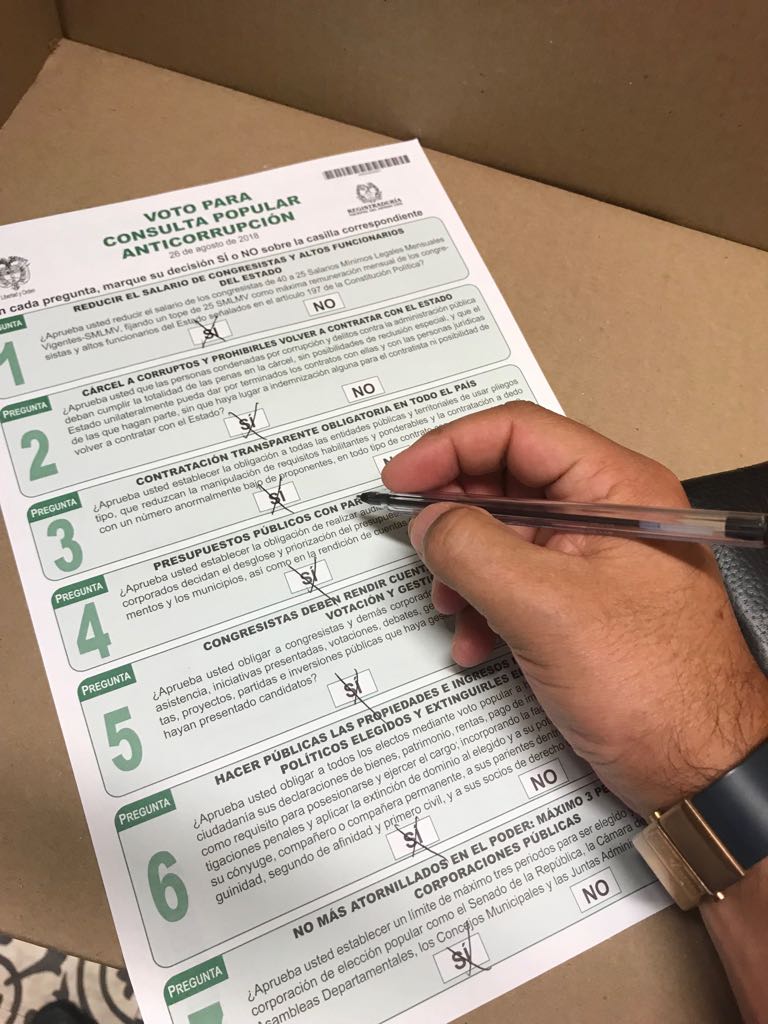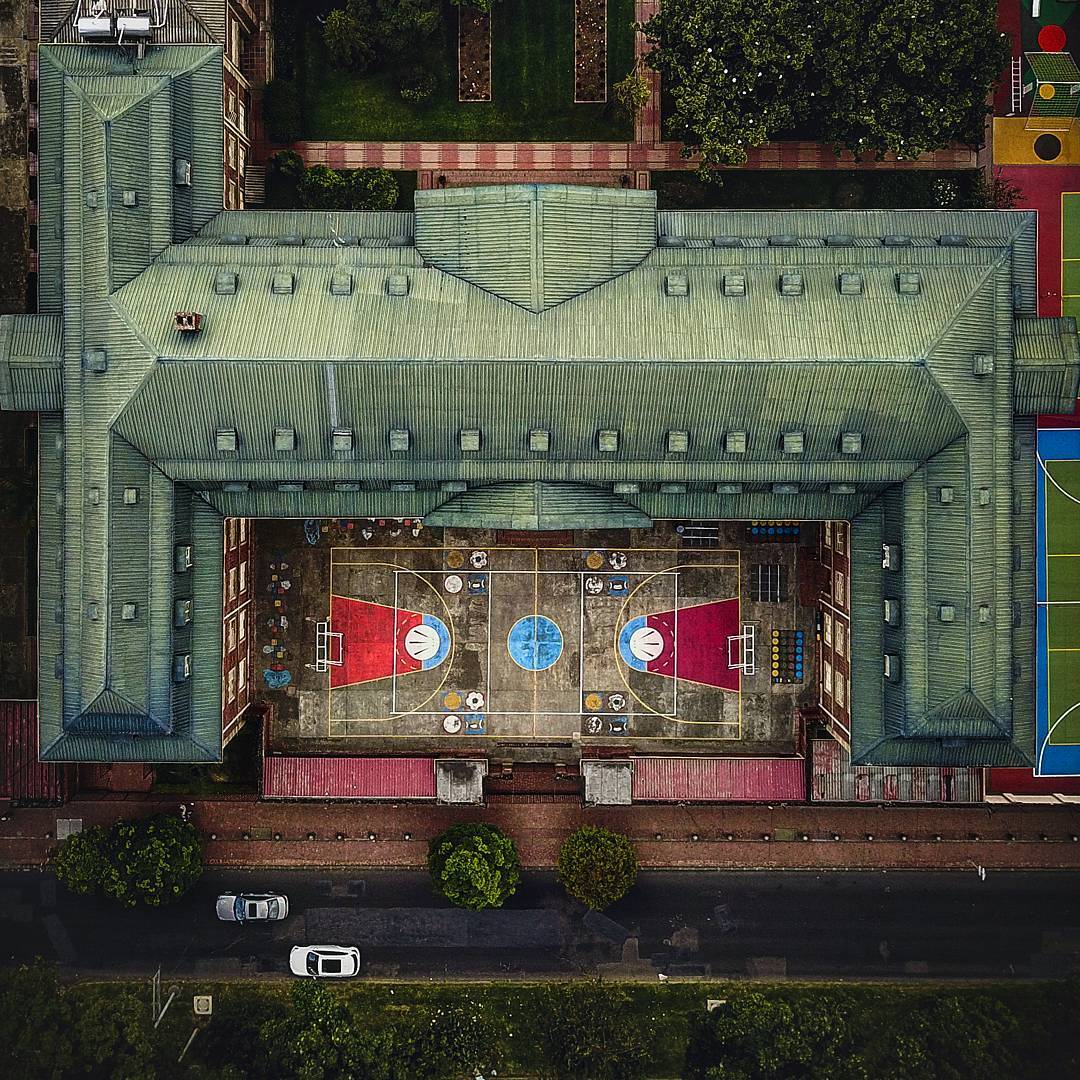After a month of protests in Colombia, it’s time to take stock of where things are and what might happen next.
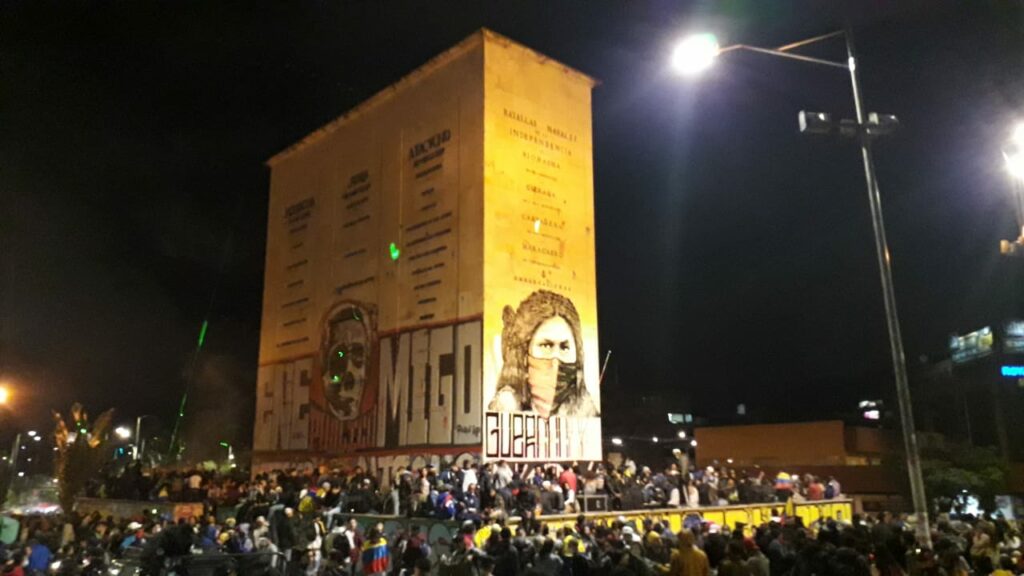
Stages have been erected across Bogotá today as focal points for today’s protests. As such, it’s a good time to reflect on the month since these protests in Colombia started. Numbers have ebbed and flowed and there have been plenty of incidents, alongside a lot of misinformation. What’s happened already, where are we now and what comes next?
Protests in Colombia: Where are we today?
Protests continue. For the past month, there have been gatherings of mainly young people throughout Bogotá and today is no different. Right now, there are groups in Hippies, Héroes and the Parque Nacional. There continue to be daily clashes at Portal de Las Américas. And Usme appears to be the latest scene of confrontation. Various TransMilenio stations remain unusable.
The biggest questions revolve around the degree to which Colombia supports the protests – or not. Here in Bogotá, they have become more and more sparsely attended, but that doesn’t necessarily tell the whole story. We don’t know how many people who’ve stayed home still support the protestors and how many oppose them. Perhaps even more importantly – how many care? Polls show that most people share the general air of unease about the country’s direction, but also that they’d like the disruption to stop.
The police have received a lot of criticism for their heavy-handed response to the situation, especially in Cali. At the moment, representatives of the International Court of Human Rights are being begrudgingly admitted into the country and the International Criminal Court has intimated that Duque could face charges for failing to protect civilians.
Worryingly, despite a noisy and impassioned outcry on social media, it seems that a lot of Colombians remain indifferent to or even supportive of police brutality. A move against Defense Minister Diego Molano was quickly rejected by the Congress, with politicians seemingly unbothered about the effect this might have on their electability next year.
On the other hand, these protests come on the back of sizeable protests 18 months ago in 2019 and stretch back to the marches for peace in 2016. Not to mention ever-swelling shows of support for marches like Women’s Day and Pride. There’s certainly enough support to keep things rumbling on, albeit with reduced numbers. In terms of attitudes towards police, that’s been volatile for a while, with unrest and violence breaking out last year.
Outside the capital, many roads remain blocked across the country and some cities still have shortages of certain goods. There is heavy unrest in various parts of the country, especially in the Pacific region. Cali, Yumbo, Popayán and Buenaventura are all currently volatile.
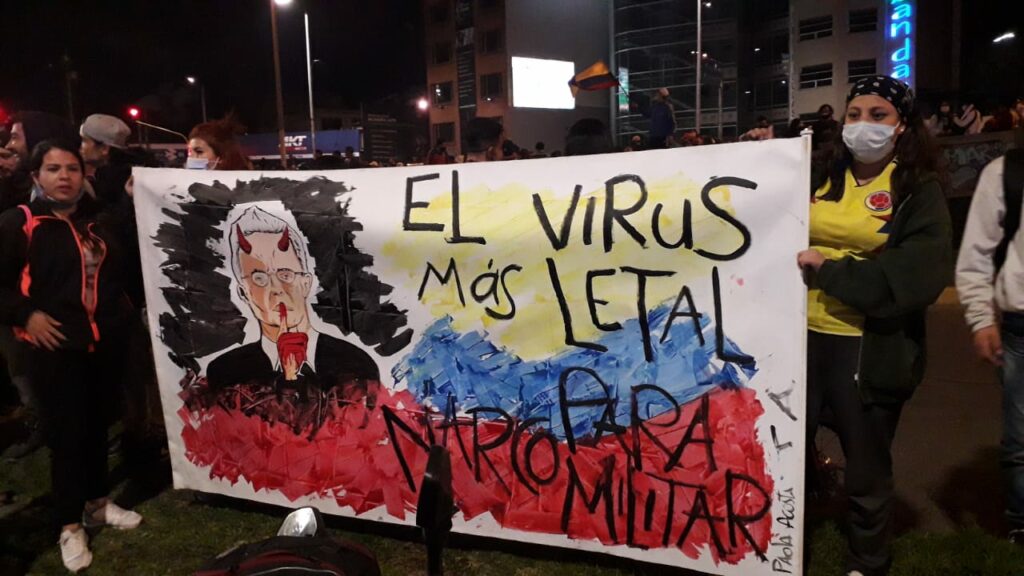
Protests in Colombia: What’s happened so far?
The tax reform was rejected, along with health reform, and Carrasquilla, the Finance Minister, resigned. That led to a downgrade of Colombia’s credit rating and it now languishes in ‘junk bond’ territory.
Duque’s administration has been shown to have no political support and many believe he’s essentially a lame duck until nest year’s elections. It’s hard to see any sort of tax reform being pushed through at this stage. He can’t get tricky bills through the senate and no-one seems to want to work with him. Claudia Blum resigned from her post as Colombia’s Foreign MInister, and no one seemed to want that job. Eventually, Vice President, Marta Lucía Ramírez, stepped in – her presidential candidacy appears to have stalled through association with Duque.
It is hard to see how much the Comité del Paro (strike committee) actually represents or speaks for the protestors. Nonetheless, they have put forward a list of demands that are utterly ludicrous and have no chance of being accepted in their current form. That could be a negotiating gambit. But it’s interesting to note that the government has put in early offers of schemes to incentivise youth hiring by businesses. Ironically, much of this was in the now-abandoned tax reform.
A few police officers now have Fiscalía cases outstanding against them in what looks like a token scapegoating. Colombia’s hosting of Copa America has also been scrapped – it’s hard to see how it could’ve taken place in the face of widespread protesting and soaring COVID cases. It probably would have become the scene of ugly demonstrations.
Protests have dwindled in intensity and number, from a high early start to a lower but ongoing presence. TransMilenio stations have taken a fair deal of damage and there has been immense disruption to the service. There was a shortage of goods as the trucker’s strike kicked in, but that seems to have passed in the capital for now.
The most intense zones of Bogotá’s unrest have been in the south, where Portal de Las Américas has been the scene of conflicts for a couple of weeks, with frequent clashes every night between ESMAD and the Primera Línea. The indigenous guard have also shown a presence recently. Usme has flared up as well, with reports of police attacks there too.
Outside the capital, Valle de Cauca has been the centre of much of the unrest. There have been many claims of police and military brutality. But with the heavy presence of armed gangs, it is hard to untangle exactly what has happened. Especially as conflicting reports abound.
It’s certainly true that there were clashes between the indigenous minga and local residents of Cali, in which the residents opened fire on the indigenous people, forcing a retreat and hospitalising eight. Residents have also taken to the streets in counter-protests against the roadblocks and wearing white shirts.
However, all major cities have seen unrest. In Pereira, a young protestor lost his life in a suspicious incident which remains shrouded in mystery. Many people hold the government responsible. In Popayán, a young woman died by suicide after alleging that she had been assaulted by police officers.
Violence has gone both ways, it must be mentioned, with police also injured. Protestors have thrown petrol bombs and acid, and there’s also a particularly worrying assault on a female officer in Cali.
Roadblocks in many parts of Colombia have also affected the delivery of goods. That’s led to shortages of certain things, including groceries, petrol, insulin and other medical supplies.
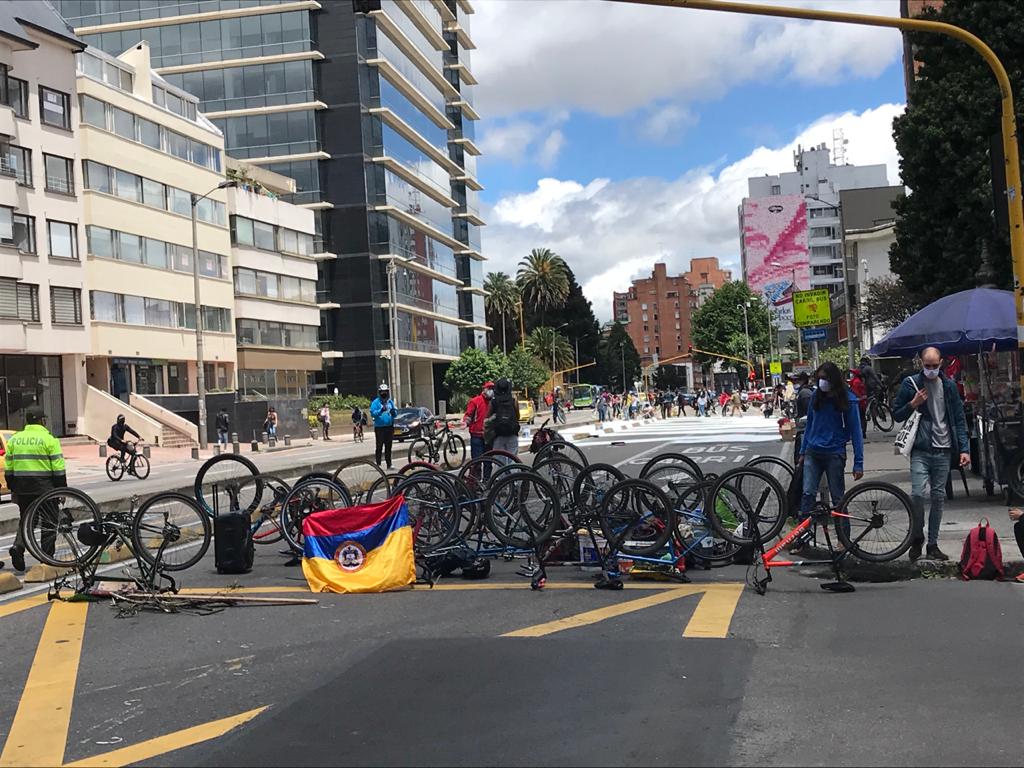
Protests in Colombia: What happens next?
The most important impact of all this unrest is likely to be seen in 2022, as Colombia goes to the polls in almost exactly a year’s time. With 84% of Colombians saying they wouldn’t consider voting for anyone who supported the tax bill, it’s difficult to see that coming back in any form until a new president is in power. However, economically, Colombia needs to show the international credit rating organisations that it can handle its fiscal responsibilities.
Whoever does come into the Casa Nariño will inherit a tricky situation. The books aren’t balanced (although the economy performed better than expected in the first quarter), so tax income will have to increase or cuts made. Neither are going to go down well with the country.
It’s also difficult to see where negotiations between the nominal protest leaders, the Comité del Paro, and Duque will lead. So far, the administration has held out olive branches which have been rejected by the Comité. The talks appear likely to end with some sort of concession to the Comité, but that’s likely to be limited and nobody knows whether it will then be accepted by the people who are actually protesting. The Comité are probably looking to the future and hoping to attract support from candidates rather than concession from the current administration.
Iván Duque
It’s hard to predict who – if anyone – will benefit from this in the end. It’s certainly true that the ruling Centro Democrático administration looks bad in everyone’s eyes, and it’s likely that the main party will try to distance itself from Duque himself. That’s a tricky act to pull off. Others believe that if the civil unrest continues, Duque may be able to earn political capital by taking hard action against the protestors. This harks back to Uribe’s playbook and only time will tell if society is now less susceptible to such fear-mongering.
Gustavo Petro
Gustavo Petro has stayed away from much of the protesting, only recently turning up in person. Nonetheless, expect a lot of flak to come his way in the next weeks and months. People are already accusing him of stirring up tensions as the establishment seeks to push the blame elsewhere.
Venezuelan sentiment
Rhetoric around vandals and the much-vaunted idea that Colombia will be the next Venezuela has started to pick up steam and we’ll likely see that growing further yet. In addition, anti-Venezuelan sentiment is growing as some of the blame for the more violent aspects of the protests gets thrown towards some of the migrant population.
Fragile rule of law
What’s worrying is that an already fragile rule of law appears to be fracturing. While we don’t see so much in Bogotá, there are reports of vigilante groups, an increased distrust of police and authorities, and ordinary citizens feeling the need to take up arms. Given that Colombia’s road to a long-term peace is already fragile, outside of the political repercussions, it’s hard to know how far these fractures – especially the cases of police brutality and the involvement of armed players will set us back.
It’s hard to know whether there is any appetite for police reform or serious reprisal. There’s not a great public call for reform as of yet and plenty of powerful opposition to it. However, the unpopularity of the police remains high, especially in certain quarters and they are losing support.
Bogotá mayor Claudia López has changed her stance recently, saying that after reflection, she can see that the protestors are suffering and fighting for change. She has been quick to condemn police violence in the past, and there is a chance that she will champion police reform.
This is not just one month of protest
In terms of numbers on the streets, it’s again hard to call. Numbers dwindle, but then surge up again on certain big days and there appears to be a hardcore of protestors that are unwilling to give up completely. As time marches on, it’s unclear how long that will be tolerated, either by the government or by the citizenry.
What is clear is that the roots of these problems are not being addressed and not going away anytime soon. Even if things simmer down for a while, but we’ll probably see a resurgence in the future. Looking at recent events in the context of what is now 18 months and counting of unrest, it’s unlikely that this is the end.

